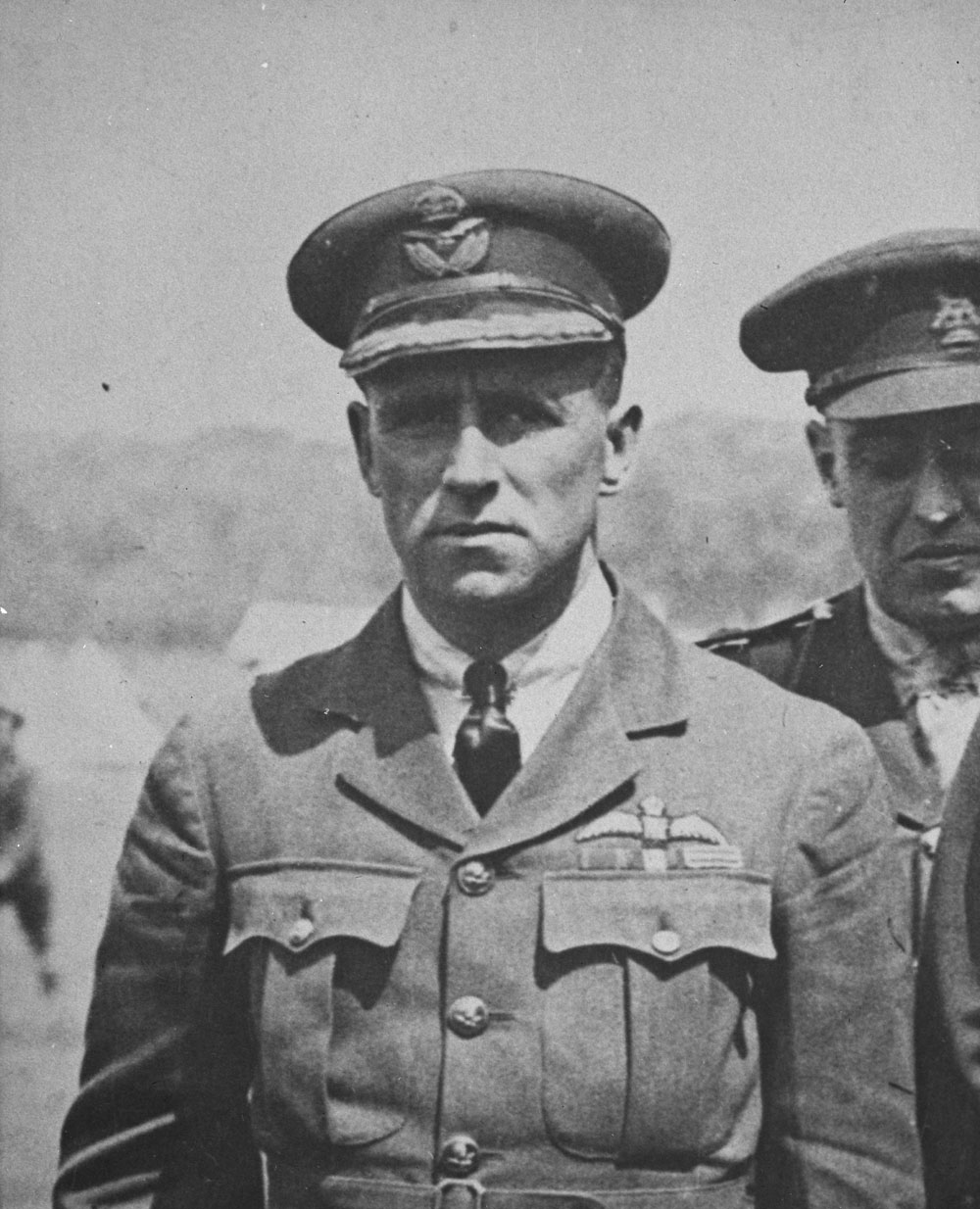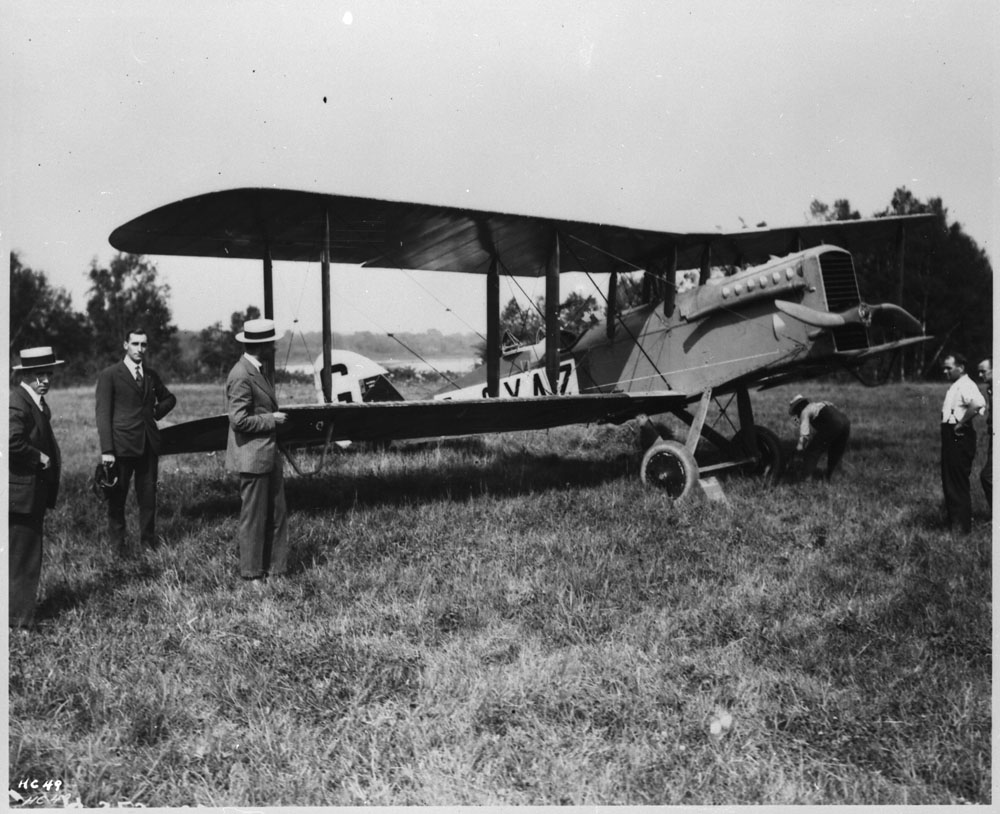Robert Leckie, CB, DSO, DSC, DFC, CD, pilot, air marshal (born 16 April 1890 in Glasgow, Scotland, United Kingdom; died 31 March 1975 in Ottawa, Ontario). Robert Leckie was a decorated flying-boat pilot who served in the Royal Naval Air Service in the First World War. Leckie served with the Royal Air Force in the interwar period and was seconded to the Canadian Air Board from 1919 to 1922. After further senior posts in the RAF, he returned to Canada during the Second World War to oversee the British Commonwealth Air Training Plan (BCAPT) from 1940 to 1944. Leckie transferred to the Royal Canadian Air Force in 1942 and served as Chief of the Air Staff from 1944 to 1947.

First World War Service
Robert Leckie was born in Glasgow, Scotland, in 1890 but immigrated to Toronto, Ontario, when he was 16. There, he worked at his uncle’s firm, John Leckie Limited, which manufactured commercial fish netting. When the First World War broke out, Leckie trained as a pilot at the Curtiss Aviation School in Lakeview, Ontario, at his own expense. He then traveled to England, where he received further training. In 1916, he joined the Royal Naval Air Service and was posted to Great Yarmouth station near Norwich. From this base, Leckie flew Curtiss flying boats on antisubmarine patrols over the North Sea.
Did you know?
More than 20,000 Canadian airmen served overseas during the First World War. At the time, Canada didn’t have its own air force, so flyers joined the Royal Naval Air Service, the Royal Flying Corps or (after April 1918) the Royal Air Force. The Canadian Air Force was created in 1920 and became the Royal Canadian Air Force in 1924.
Leckie also became known for his success against Zeppelin airships. German airships began bombing Britain in January 1915. The first towns affected were Great Yarmouth and King’s Lynn on the coast, which were bombed on January 19. In May, the city of London was bombed. Over the course of the war, Zeppelin crews conducted more than 50 raids, killing at least 500 and wounding many others. The airships were vulnerable, however, to attack from British airplanes and defensive measures that included searchlights and anti-aircraft artillery. Leckie, who flew out of the RNAS station at Great Yarmouth, was credited with two airship “kills”: he piloted the plane that shot down Zeppelin L.22 on 14 May 1917 and fired the rounds that downed L.70 on 5 August 1918.

Canadian Air Board, 1919–22
In April 1919, Leckie was appointed commander of the RAF’s 1 Canadian Wing. He was then seconded to Canada as Superintendent of the Flying Operations Branch from 1919–22. In this role, he led the development of commercial air services in Canada.
Leckie also played a leading role in the first trans-Canada flight. The trip began on 7 October 1920, when he and copilot Major Basil Hobbs took off in a Fairey III C seaplane from Air Board Station in Dartmouth, Nova Scotia, heading to Winnipeg, Manitoba. En route to Winnipeg, they faced adverse weather conditions and had to change planes while making a number of airmail delivery stops. From Winnipeg, other pilots took over, flying to Regina, then to Calgary, and arriving finally in Richmond, British Columbia, on 17 October. Five separate aircraft were used in the journey, having flown nearly 5,400 km (3,355 miles) in 10.5 days and logging just over 49 hours of flying time.

RAF Service: Interwar Period
Leckie returned to England in 1922, where he took up a position at the headquarters of the Naval Staff College and Coastal Command. Subsequent positions included flying command of HMS Hermes, one of Britain’s early aircraft carriers. In 1935, he was appointed Director of Training for the RAF, and in 1938 he became RAF Commanding Officer for the Mediterranean.
Second World War and the BCATP
By 1940, he was promoted to air commodore and appointed Air Member for Training in Canada, in which position he oversaw the British Commonwealth Air Training Plan (BCAPT).
The BCAPT trained pilots between the ages of 18 and 24, as well as aircrew such as navigators, bomb-aimers, wireless operators and flight engineers. The program ultimately graduated more than 131,533 personnel from 11 countries over the course of the Second World War, with graduates joining various air forces in the Commonwealth. Approximately 107 schools covering 231 sites across Canada were involved with over 3,540 aircraft, 33,000 air force personnel and 6,000 civilian employees. It was one of the most successful air training programs in history.
In 1942, Leckie transferred to the RCAF and in 1944 was appointed Chief of the Air Staff and promoted to air marshal. At that time, the RCAF was the fourth largest air force in the world, with over 249,600 men and women serving in 47 squadrons during the war. Leckie held that post until 1947, when he retired from the RCAF.

Post-War
Following his retirement, Leckie served as a special advisor to the Air Cadet League of Canada. He received several honours for his service, including Companion of the Bath with the Distinguished Service Order, Distinguished Service Cross, Distinguished Flying Cross and Canadian Forces Decoration and was considered one of the most impressive of Canada's senior air officers in the RCAF during the war. He died at the age of 84 on 31 March 1975 and was posthumously inducted into the Canadian Aviation Hall of Fame in 1988.

 Share on Facebook
Share on Facebook Share on X
Share on X Share by Email
Share by Email Share on Google Classroom
Share on Google Classroom


